Vancouver gets its water from surface.Raw sewage out of Vancouver sewer system into the Pacific Ocean?
It's Climate Change I tell'ya!! IT'S CLIMATE CHANGE!!
- Thread starter B00Mer
- Start date
You are using an out of date browser. It may not display this or other websites correctly.
You should upgrade or use an alternative browser.
You should upgrade or use an alternative browser.
Apparently aquifers are a product of our unique contemporary society... Kinda like iPhonesWow. Climate Change is creating aquifers?

Australia's Great Barrier Reef status lowered to critical and deteriorating
MELBOURNE — The health of Australia’s Great Barrier Reef, the world’s most extensive and spectacular coral reef ecosystem, is in a critical state and deteriorating …
Killing rats could save coral reefs
By Victoria GillScience correspondent, BBC News- 12 July 2018
- Science & Environment
Image copyrightSPL
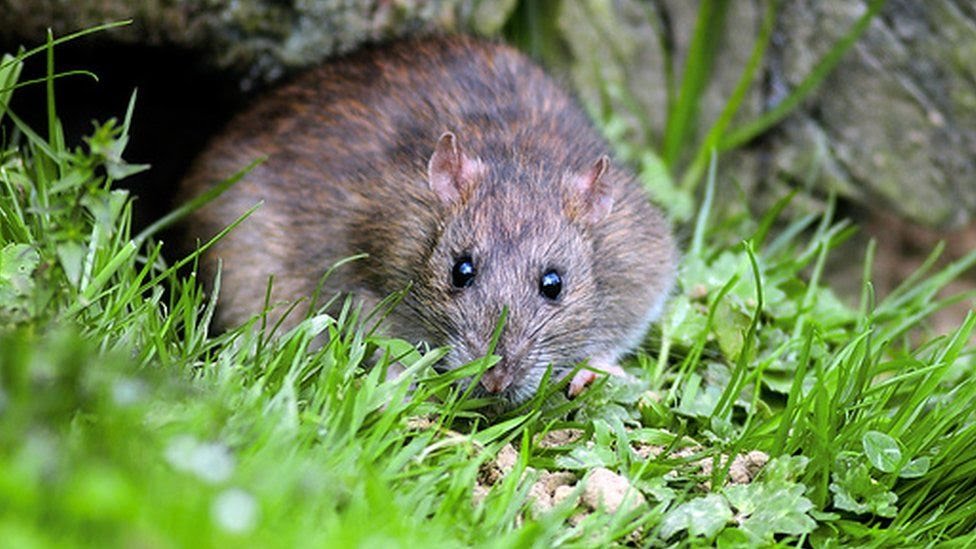
Image captionBrown rat - an invasive predator that eats seabird eggs and chicks
The much maligned rat is not a creature many would associate with coral reefs.
But scientists studying reefs on tropical islands say the animals directly threaten the survival of these ecosystems.
A team working on the Chagos Islands in the Indian Ocean found that invasive rats on the islands are a "big problem" for coral reefs.
Rats decimate seabird populations, in turn decimating the volume of bird droppings - a natural reef fertiliser.
The findings are published in Nature.
- Coral reefs entangled with plastic
- Rats and mice cleared from South Georgia
- The rare event threatening coral reefs
Image copyrightNICK GRAHAM
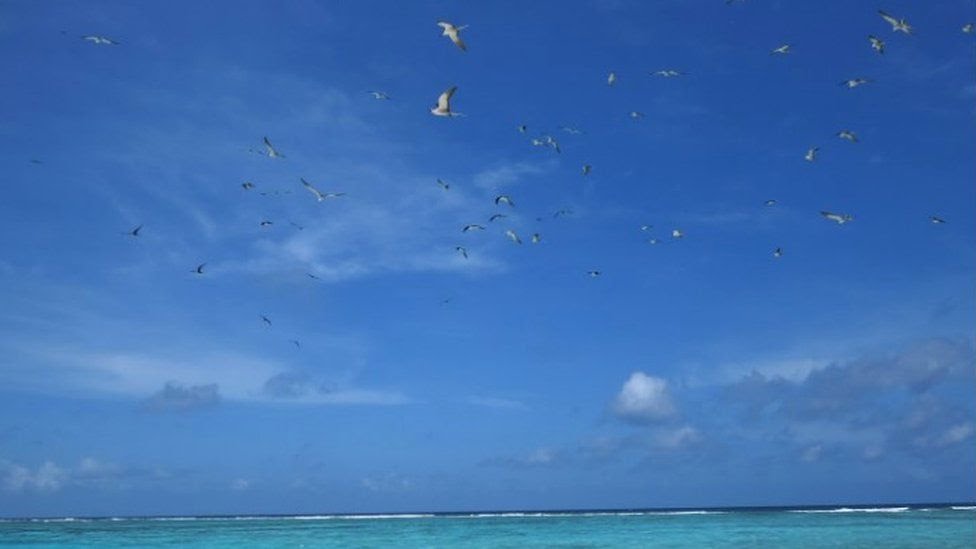
How do rats harm coral reefs?
The Chagos Archipelago provided a large-scale natural laboratory to answer this question; although the islands are uninhabited by humans, some of them are now home to invasive rats, brought by ships and shipwrecks. Other islands have remained rat-free."The islands with and without rats are like chalk and cheese," said lead researcher Prof Nick Graham from Lancaster University .
"The islands with no rats are full of birds, they're noisy, the sky is full and they smell - because the guano the birds are depositing back on the island is very pungent.
"If you step onto an island with rats, there are next to no seabirds."
By killing seabirds, this study revealed, rats disrupt a healthy ecosystem that depends on the seabird droppings, which fertilise the reefs surrounding the island.
On rat-free islands, seabirds including boobies, frigatebirds, noddies, shearwaters and terns travel hundreds of kilometres to feed out in the ocean. When they return to the island, they deposit rich nutrients from the fish they feed on.
"These nutrients are leaching out onto the reef," explained Prof Graham.
Image copyrightNICK GRAHAM
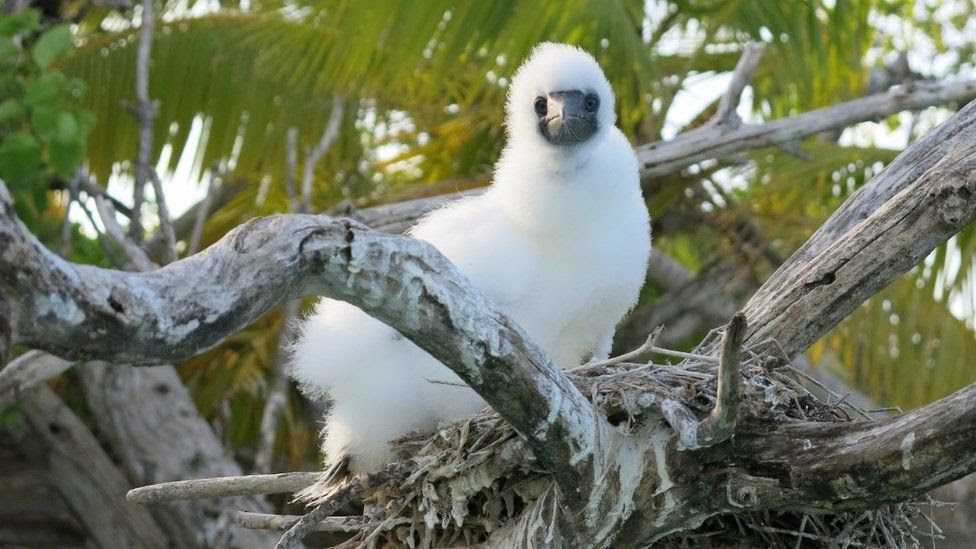
Image captionSeabirds like boobies nest far more abundantly on rat-free islands
He and his team were able to track the source of those nutrients back to the fish that seabirds fed on by analysing algae and sponges growing on the reef.
"We also found that fish on the reefs adjacent to islands with seabirds were growing faster and were larger for their age than the fish on reefs next to rat-infested islands," Prof Graham explained.
There were also significantly more fish on rat-free reefs than on those around "ratty islands".
Why does this matter?
Coral reefs cover less than 0.1% of the ocean's area, but house about one third of ocean biodiversity."Coral reefs are also hugely threatened," said Prof Graham. "So anyone who cares about extinctions and biodiversity needs to care about the future of coral reefs."
Image copyrightNICK GRAHAM
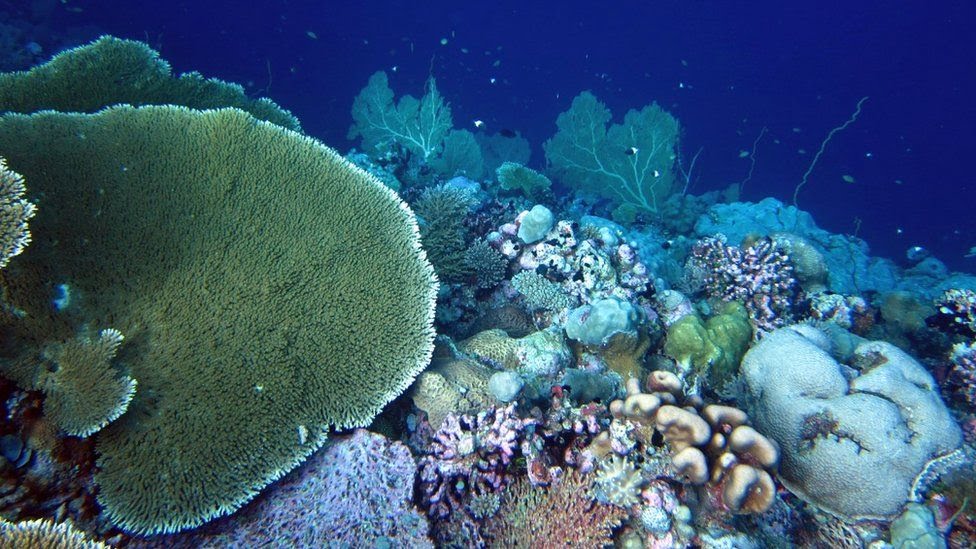
Image captionCoral reef systems are at "crisis point" because of climate change
The reefs and their abundance of marine life provide livelihoods for millions of people around the world, so the decline in coral reefs is poised to become a humanitarian crisis.
In an accompanying commentary article Dr Nancy Knowlton, a marine scientist from the Smithsonian's National Museum of Natural History in Washington DC , pointed out that, while "adding rats to the list of dangers faced by reefs might seem discouraging, the discovery of these negative impacts points directly to a specific strategy" that could slow the ongoing degradation of reefs.
That strategy - rat eradication on islands throughout the world - is exactly what the researchers who carried out this study now advocate.
"Coral reef systems are at crisis point because of climate change," said Prof Graham. "And we're desperately trying to find ways to enhance the resilience of coral reefs and allow them to cope with climate change.
"This is one of the clearest examples so far, where eradicating rats will lead to increased numbers of seabirds and this will bolster the coral reef."
Follow Victoria on Twitter
Clear the Chinese from the South China sea would help as well Lol
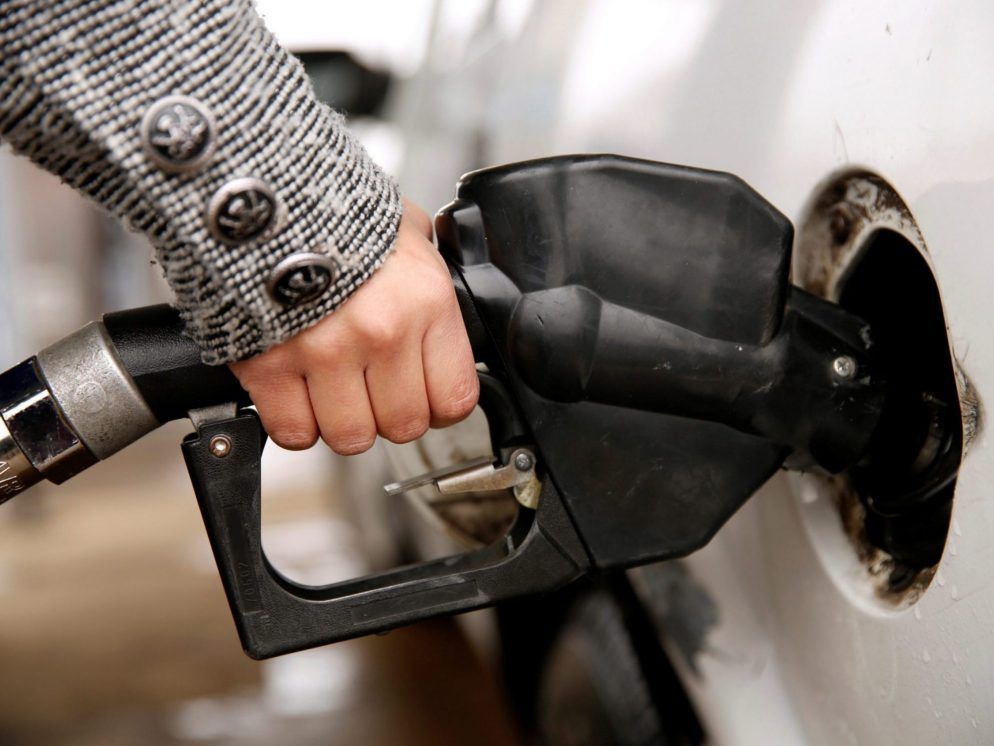
‘IT CAN NO LONGER BE FREE TO POLLUTE': Updated climate plan includes carbon tax hikes
OTTAWA — The federal government has released a $15-billion plan to meet its climate change commitments that includes steady increases to its carbon tax in each of t…
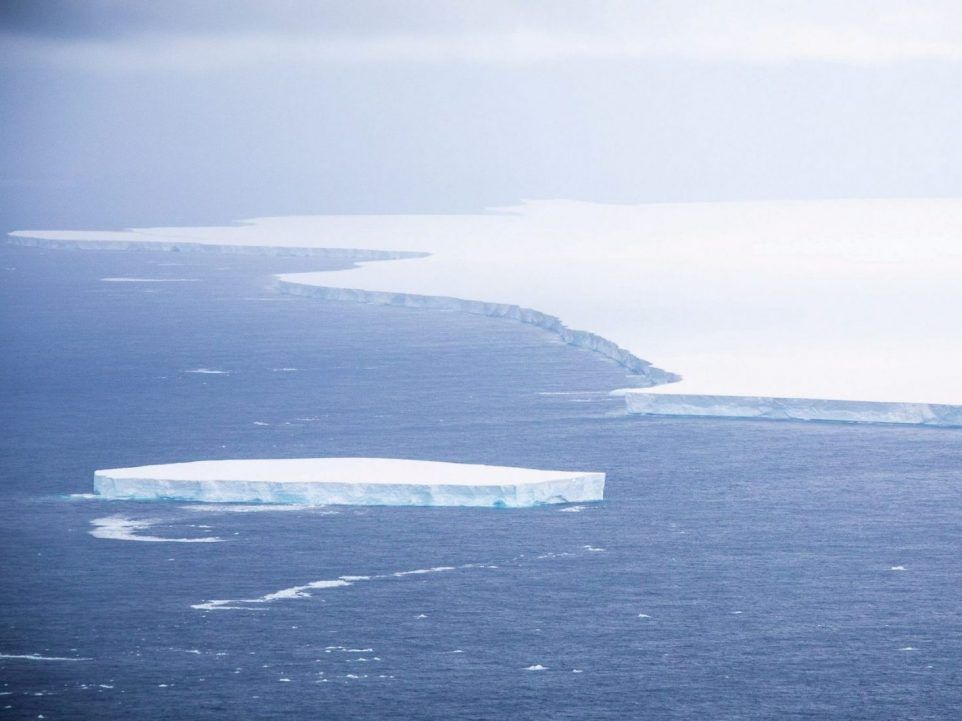
Monster iceberg on slow collision course with South Atlantic wildlife island
Iceberg A68a has been on a slow journey toward potential disaster.
Leftys never met a tax they didn't like.
‘IT CAN NO LONGER BE FREE TO POLLUTE': Updated climate plan includes carbon tax hikes
OTTAWA — The federal government has released a $15-billion plan to meet its climate change commitments that includes steady increases to its carbon tax in each of t…torontosun.com
More taxes means more money in your pocket.
Didnt you read the propaganda?
Didnt you read the propaganda?
“We are continuing to move forward and putting more money in the pockets of Canadian families by increasing the price on pollution.”
Last edited:
If one goes south across the equator does right become left ?
I can't believe this part of the article where it says don't listen to Alta., Sask. and Ont. the majority of Canadians welcome the Carbon tax and the push to prevent Climate change
Even while nearly two-thirds of Canadian voters were siding with a price on carbon, the provincial governments in Alberta, Saskatchewan and Ontario continued their legal challenge of the federal carbon price. If the Supreme Court rules against the federal government, the Liberals will have to adjust their approach.
But even if the federal proposal prevails, there is no guarantee that the conservative premiers in those provinces will give up the political fight — particularly now that the price is set to continue increasing......... More Here
Waiting on the Supreme Court
Revenue from the fuel surcharge will continue to be returned to Canadians in rebates, now on a quarterly basis. As the parliamentary budget officer confirmed in 2019, the vast majority of Canadian households receive more from the rebate than they pay out in extra costs.Even while nearly two-thirds of Canadian voters were siding with a price on carbon, the provincial governments in Alberta, Saskatchewan and Ontario continued their legal challenge of the federal carbon price. If the Supreme Court rules against the federal government, the Liberals will have to adjust their approach.
But even if the federal proposal prevails, there is no guarantee that the conservative premiers in those provinces will give up the political fight — particularly now that the price is set to continue increasing......... More Here
What a joke
That price will continue to increase by $10 a tonne a year until it reaches $50 in 2022. Trudeau announced increases will carry on and get steeper after that — $15 a tonne per year.
By 2030, the price is to be $170 tonne — enough, say federal officials, to increase the price of gas at the pump by 27.6 cents a litre.
Trudeau said the tax will continue to be rebated and that most families should get more back than they pay.
"We are continuing to move forward and putting more money in the pockets of Canadian families by increasing the price on pollution."
Trudeau took aim at provincial premiers such as Jason Kenney in Alberta and Scott Moe in Saskatchewan, who have challenged the constitutionality of a federal carbon tax.
"There are some places in this country that still want to make pollution free again," he said. "We're not going to do that."
The Supreme Court is expected to rule in the new year on the provincial challenges to the carbon tax. Trudeau wouldn't say how a provincial victory could affect the plan.
Alberta Environment Minister Jason Nixon called the plan "another attack on Alberta's economy and Alberta's jurisdiction."
He said the plan would result in jobs and investment leaving Alberta.
Saskatchewan Premier Scott Moe said Trudeau broke a promise.
"The Trudeau government had previously committed to consultations on any increase to the carbon tax beyond 2022, but no such consultations with myself, the Environment Minister or the province occurred."
About $7 billion of the $15 billion in the plan had been previously announced for programs such as homeowner retrofits, tree-planting, conservation and zero-emission vehicle rebates.
The biggest piece of what's left — $3 billion — is to go to industry. Large industrial emitters will be able to apply for money for projects that either reduce emissions, bury them underground or offset them.
The industrial carbon tax is to rise along with the consumer price. But industries that compete internationally will continue to pay the levy only on emissions that exceed the average for their sector.
Municipalities are to receive $1.5 billion to improve the energy efficiency of buildings such as arenas and halls. Nearly $1 billion is to go to improving Canada's electrical grid.........More Here
That price will continue to increase by $10 a tonne a year until it reaches $50 in 2022. Trudeau announced increases will carry on and get steeper after that — $15 a tonne per year.
By 2030, the price is to be $170 tonne — enough, say federal officials, to increase the price of gas at the pump by 27.6 cents a litre.
Trudeau said the tax will continue to be rebated and that most families should get more back than they pay.
"We are continuing to move forward and putting more money in the pockets of Canadian families by increasing the price on pollution."
Trudeau took aim at provincial premiers such as Jason Kenney in Alberta and Scott Moe in Saskatchewan, who have challenged the constitutionality of a federal carbon tax.
"There are some places in this country that still want to make pollution free again," he said. "We're not going to do that."
The Supreme Court is expected to rule in the new year on the provincial challenges to the carbon tax. Trudeau wouldn't say how a provincial victory could affect the plan.
Alberta Environment Minister Jason Nixon called the plan "another attack on Alberta's economy and Alberta's jurisdiction."
He said the plan would result in jobs and investment leaving Alberta.
Saskatchewan Premier Scott Moe said Trudeau broke a promise.
"The Trudeau government had previously committed to consultations on any increase to the carbon tax beyond 2022, but no such consultations with myself, the Environment Minister or the province occurred."
About $7 billion of the $15 billion in the plan had been previously announced for programs such as homeowner retrofits, tree-planting, conservation and zero-emission vehicle rebates.
The biggest piece of what's left — $3 billion — is to go to industry. Large industrial emitters will be able to apply for money for projects that either reduce emissions, bury them underground or offset them.
The industrial carbon tax is to rise along with the consumer price. But industries that compete internationally will continue to pay the levy only on emissions that exceed the average for their sector.
Municipalities are to receive $1.5 billion to improve the energy efficiency of buildings such as arenas and halls. Nearly $1 billion is to go to improving Canada's electrical grid.........More Here
Do you think Trudeau will survive beyond April 1 and the next tax hike?
4 months is plenty of time for Justin lose the Dippers and le Bloc, he fucks up daily.
4 months is plenty of time for Justin lose the Dippers and le Bloc, he fucks up daily.
Trudeau has a son, watch out.. We will have another one in 20 years
Castro's grandchildren
Sorry to bust yer bubble. He isnt Castro's. From the mouth up hes the spitting image of Pierre.
The eyes have it.
The eyes have it.

